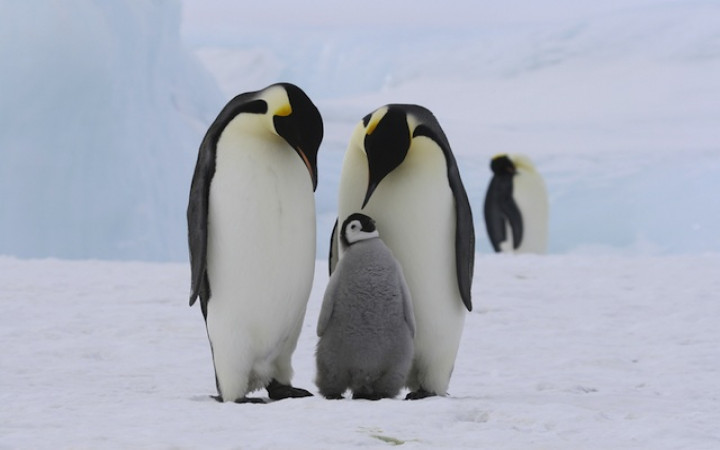Emperor penguins are the largest penguins on Earth. At almost 4 feet tall and weighing 50 to 90 pounds, these penguins grow to be the same size as many elementary school students!
Emperor penguins live in Antarctica, the coldest habitat on Earth. Temperatures in Antarctica can drop as low as -140° F. The shape of its body helps the emperor penguin survive life in these frigid temperatures.
The emperor penguin's body has a thick layer of blubber insulated by a thick layer of down covered by feathers. These three layers provide triple protection from harsh conditions and extreme cold. In addition to trapping body heat in, the down feathers also keep cold air and water out.
The emperor penguin's diet consists mostly of fish, squid and crustaceans. It catches its dinner by diving into the sea.
Although humans can't stay underwater very long before they need to come up for a breath, emperor penguins can remain submerged for up to 18 minutes at a time!
This is possible thanks to specialized body systems. The emperor penguin's blood allows it to function even with very low oxygen levels. In order to use as little oxygen as possible while diving, the emperor penguin can also slow its metabolism and stop any nonessential organ functions.
Each winter, the emperor penguin walks 30 to 75 miles over ice to breed. A single breeding colony can include thousands of penguins.
When a female emperor lays an egg, she immediately rolls it onto the father penguin's feet. Male penguins care for the eggs until it is hatching time. During this time, male penguins can lose up to half of their body weight because they stay on shore caring for the egg and do not return to the sea to eat.
About seven weeks after birth, emperor penguin chicks form groups called “creches." The penguins in a creche huddle together for protection and warmth, but they continue to be fed by their parents. Emperor penguin chicks can identify their parents from the group of adult penguins by the sound of their call.
At six months of age, emperor penguin chicks are fully grown. At this time, the adult penguins and all the chicks return to the open sea together. In the wild, emperor penguins live to be about 20, although some have lived to be 50 years old.
The emperor penguin, along with nine other species of penguins, may soon be included under the United States Endangered Species Act. Warming seas and industrial fishing have begun to change fish populations, making it more difficult for penguins to find enough food. The emperor's habit and breeding colonies are also becoming disrupted by tourism.




